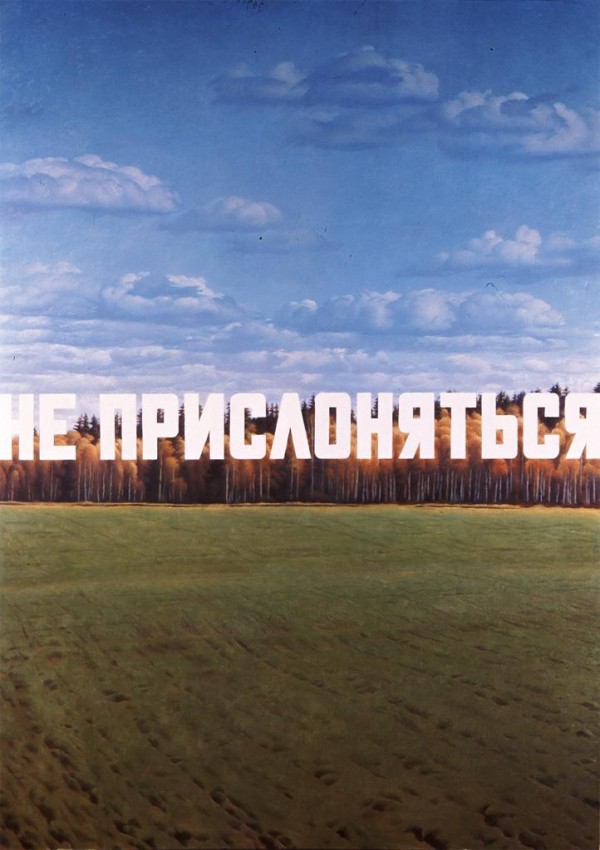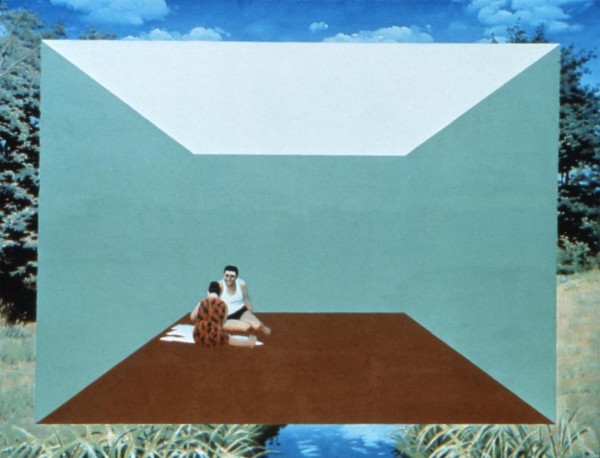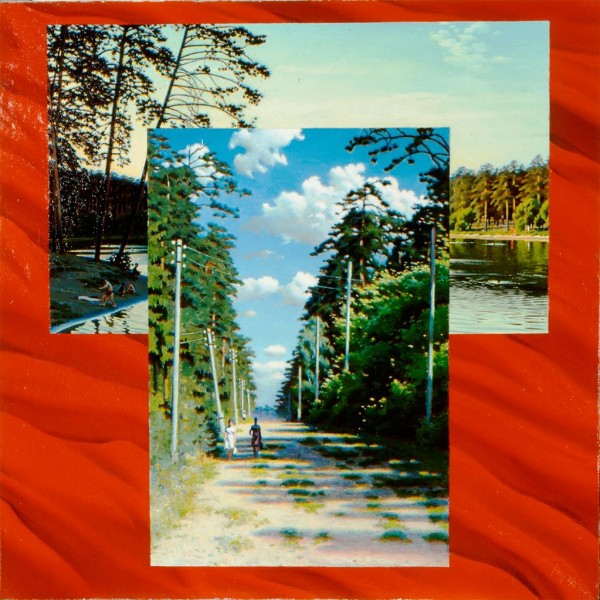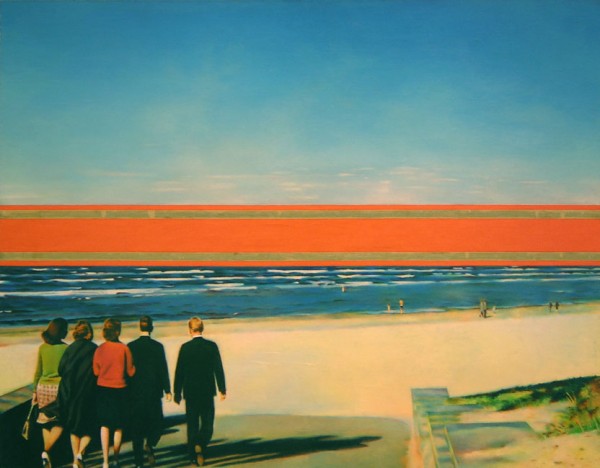Erik Bulatov
Saturday, 17 August 2013




From top to bottom: Not to be Leaned On (1987), People in a Landscape (1976), Two Landscapes on a Red Background (1972-74), Horizon (1971-72)
“Eric Bulatov was born in Sverdlovsk in 1933 and was raised in Moscow. He began his studies at the Moscow School of Art and finished at the Surikov Institute in 1958. After working several years as a children’s book illustrator for the State, Bulatov’s disillusionment with the creative and political restrictions of his position inspired him to begin making unofficial works of art. This exhibition, the first comprehensive showing of a major contemporary Soviet artist in Chicago, consists of twenty-three large-scale works painted between 1967 and 1988, all executed ‘unofficially’ within the context of Soviet society and it’s government.
Bulatov’s paintings are large, colorful, realistic images of landscapes, skies, urban settings, and people, many of which are painted over and partially obscured by wry words or phrases. Metaphorically rich and poetic blue skies are overlaid with Russian texts that translate: Glory to the U.S.S.R. or Trademark. Lush, green landscapes toil under the labels Not To Be Leaned On or Caution.
Bulatov’s subject matter is broad. Equally broad is his perception of the government’s role in the classification and control of everything. Bulatov symbolizes the government through his use of language as a system of order and control, the foundation of written law and constraint which he then plasters on every tree and rock. It is in this sense that Bulatov’s paintings may take on a more universal accuracy and a more populist appeal. His emphasis on only the public and external aspects of life–the street, the land, the State television broadcast–reinforces the notion that one’s thoughts and feelings are (still) one’s own. the psychological and emotional are beyond the confines of words, language and law.
This literal irony and contradiction is symbolically enriched and layered through Bulatov’s deft use of Social Realism, the government’s traditional mechanism for pictorial communication. His wordless images of Brezhnev have all the trappings of officialdom: a crisp pose, a heroic gaze, the flags of the communist States. However, the calculated flatness and lack of flourish in Bulatov’s style tends to rub off on his subjects, making them seem the victims of their own constraints. Bulatov’s paintings are unflattering without being overtly critical; his sly matter-of factness is too accurate to be false.”
-Joe Scanlan for the Renaissance Society